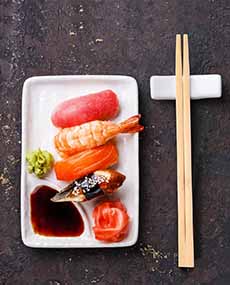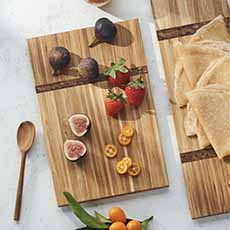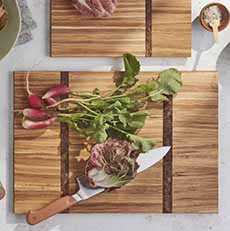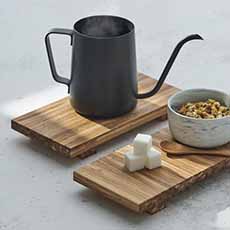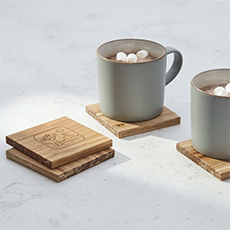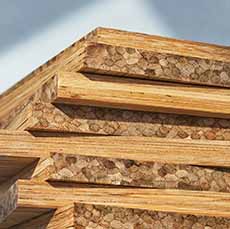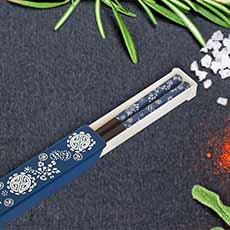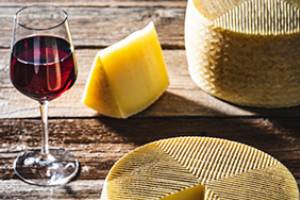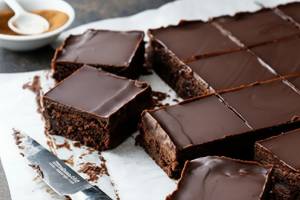Chopsticks Recycled Into Something You Can Use, Not Landfill
|
National Chopsticks Day was February 6th, and we headed out for a sushi dinner. But as we removed the chopsticks from their paper wrapper, we paused to wonder how many pairs of chopsticks are thrown out every day, after just one meal, and how many trees are felled in their production. So we looked it up. Notes a Canadian company: “In Vancouver alone, we’re throwing out 100,000 chopsticks a day….They’re traveling 6,000 or 7,000 miles from where they’re manufactured in Asia to end up on our lunch table for 30 minutes” [source]. Another company is California-based Renew By Trinity International Industries, whose handsome wares are in the photos at right. Let’s take a look at these formerly single-uses chopsticks that have been upcycled into permanent items for the home. > The difference between recycling and upcycling, below. > Chopstick issues beyond landfill, below. > An easy way you can be part of the solution, below. Trinity International Industries is a planet-first company with a mission to cut back on landfill and turn chopsticks, in particular, into something useful and beautiful. Renew By Trinity is a brand committed to upcycling mountains of discarded materials otherwise headed to landfills. Committed to production upcycling (the difference between upcycling and recycling is below), Renew transforms single-use chopsticks into artisan-crafted, handsome wood products for home and for gifting: > Head to RenewByTrinity.com to see all the wares. > April is Earth Month and April 22nd is Earth Day. Upcycling and recycling both reduce landfill, energy usage, air pollution, water waste, and CO2 greenhouse gas emissions. While bamboo is sometimes used, many chopsticks are made from birch, spruce, or other hardwoods that take decades to mature. While wooden chopsticks are technically biodegradable, the chemical treatments used in their manufacture can slow decomposition and leach into soil. Plus, an estimated 20-25 million trees are cut down annually—aspen, bamboo, and birch—to produce roughly 80-100 billion pairs of disposable chopsticks that end up in landfills. Whether the trees are in China or elsewhere, every lost tree on the planet means one less tree to absorb carbon dioxide from the air through photosynthesis. Trees help slow the CO2 buildup in the atmosphere that has been rapidly warming our planet. That’s just the beginning of what trees do to protect the health of the planet and the people who live on it. The total environmental impact of disposable wooden chopsticks—and every tree they consume—is significant. > Here’s more about it. |
|
|
|
If you frequently dine at restaurants with disposable chopsticks, consider bringing your own, reusable chopsticks. This version looks similar to the ones the restaurant supplies, so you won’t stand out. And if style is your thing, you can find reusable chopsticks with carrying cases in many colors and designs. A potential bonus of using chopsticks that stand out is that other diners may ask you about them. It’s an easy opportunity to potentially save even more chopsticks from the landfill. REUSABLE CHOPSTICKS IN A CARRYING CASE
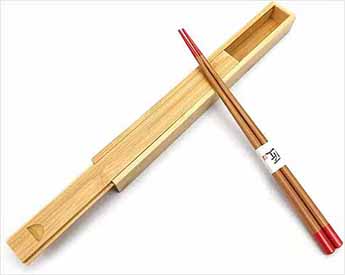 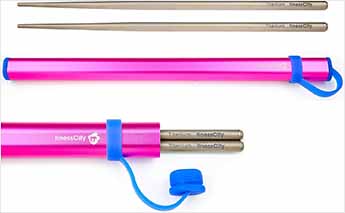 [10] Reusable bamboo chopsticks and case are just $7.50 on Amazon (photo © JapanBargain 2214). You can also get sets with cloth drawstring pouches.
[11] One of many examples of colorful chopsticks that make a statement. These titanium chopsticks are a bit more expensive, at $16.99, but there are many options under $10 (photo © Finess City | Amazon).
CHECK OUT WHAT’S HAPPENING ON OUR HOME PAGE, THENIBBLE.COM. |
||
